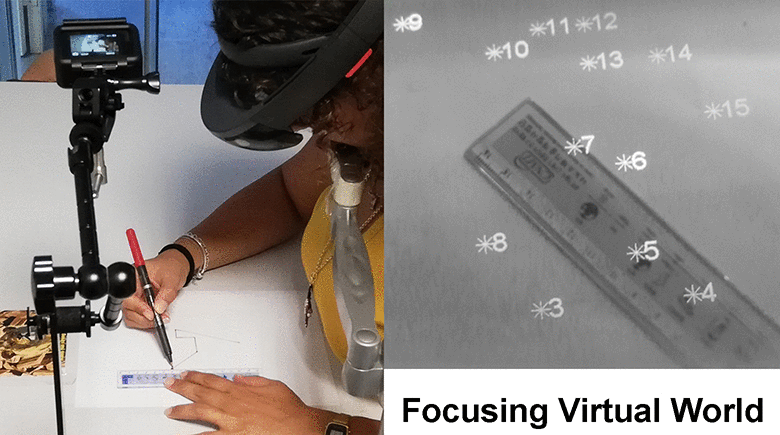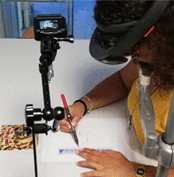
The current generation of consumer-level Optical-See Trough (OST) Head-Mounted Displays (HMDs) is not specifically designed for the peripersonal space. Indeed it generally renders the virtual content on a fixed focal plane located at a distance of 2 meters or more from the user. As a consequence, during manual task, the user not only experiences a vergence-accommodation conflict, but also a mismatch in the ocular accommodation stimulus for the virtual content and the real-world scene (his/her eyes can’t focus on both virtual and real objects simultaneously).This research study explores how focal rivalry affects users’ performance when using Augmented Reality (AR) to complete precision manual tasks. At this aim, an experimental study has been designed to investigate the performance of 20 subjects in a “connect-the-dots” task, with and without the use of AR, using one of the most advanced OST HMD, the Microsoft HoloLens. Obtained results shows that user performances are significantly better during the naked eye tests: on average, participants made errors of 2.3 mm in length when using the HoloLens (with a maximum error of 5.9 mm), compared to errors averaging 0.9 mm during the naked eye tasks. Such errors may depend not only on eye-to-display calibration errors, but also on the afore mentioned focus issues which impair the contemporaneous view of the real world and the virtual target and can led to topological errors (e.g. gaps between the endpoints of consecutive lines). Obtained results suggest to pay attention in using commercial OST-HMDs to guide high precision manual tasks which require accurate alignment of Virtual reality (VR) data to the actual target (such as surgical tasks), since the available technology is not designed to operate on peripersonal space.

